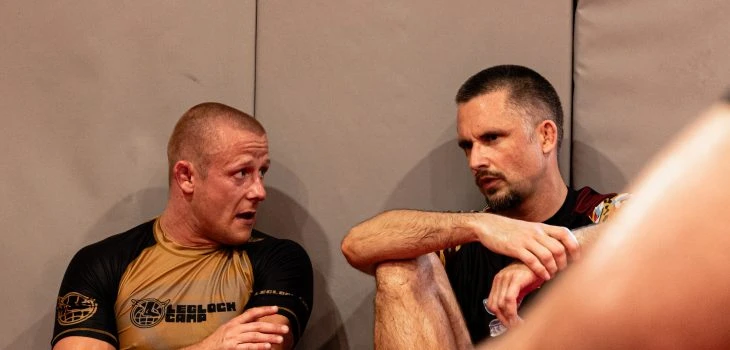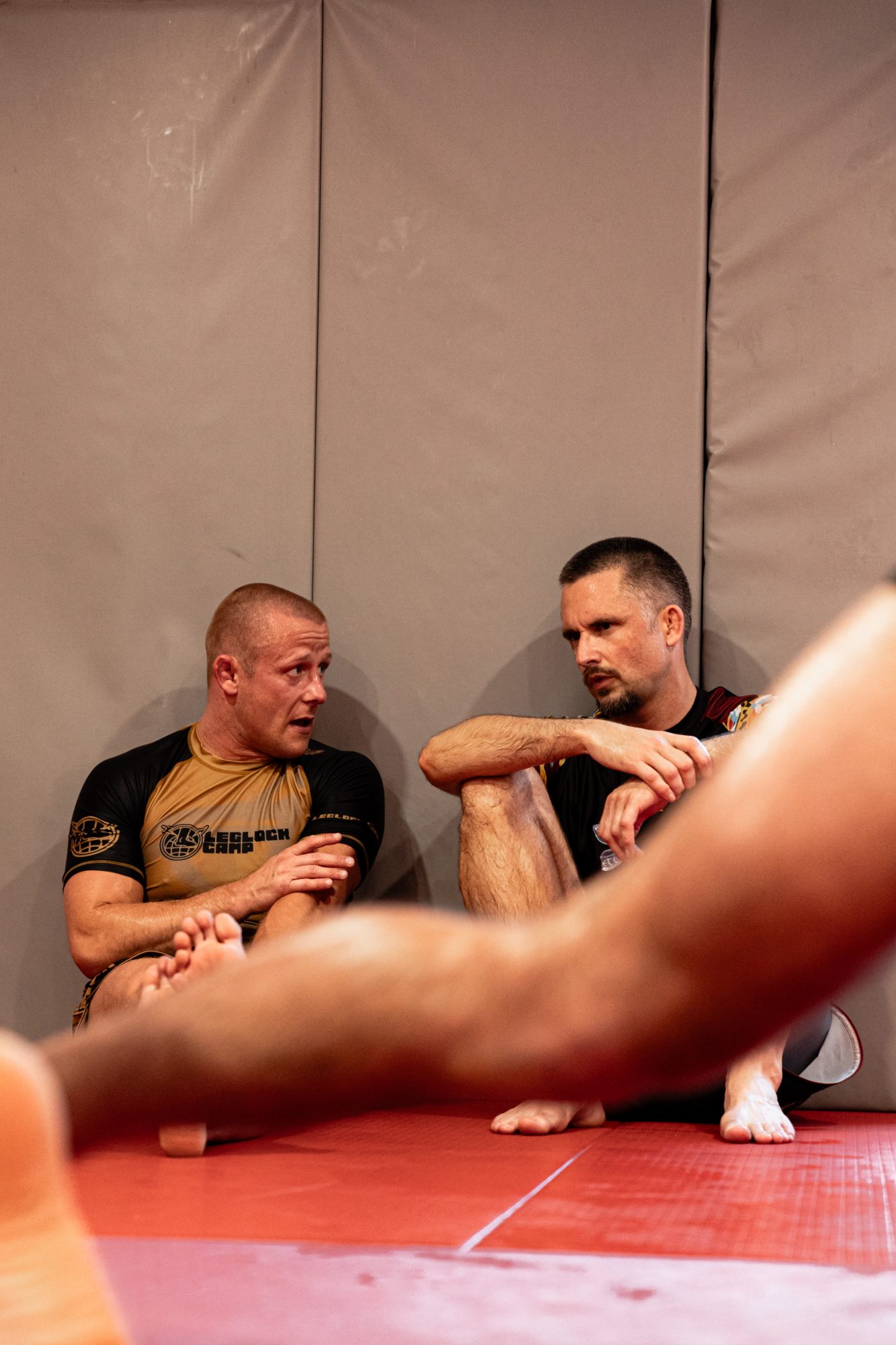 Scramblog
Scramblog Is it time to do away with belts in…
Is it time to do away with belts in BJJ?

Controversial title, but hear me out. I have been training for almost 20 years and have a black belt, once considered a legendary strip of cloth, but now owned by tens of thousands of people across the world including a bunch of fat rich guys who bought their belts from less than scrupulous retired fighters.
This black belt still feels like a fantastic achievement – I earned it through a lot of pain, suffering and bribes. But, it does not protect me from the insatiable blue, purple and brown belts at the gym that I go to war with two or three times a week. It does not protect me at all. And as soon as the gi comes off, it protects me even less. Perhaps because I am no longer wearing it, it cannot transmit its magical properties to me any longer. But when I am fighting for my life (metaphorically, I think?) against an 18 year old purple belt who trains twice a day five times a week, the rank of black belt seems almost irrelevant.
Someone without knowledge would assume that Black Belt always trumps any belt below it – blue, purple, or brown. But those with experience in the sport soon understand that the picture is much more complicated than that. Sure, if you put a decent black belt up against a blue or purple belt hobbyist who trains once or twice a week, the black belt will be superior in almost every aspect, almost every time. The real metric as an indicator of improvement, is consecutive mat time.
I know it from my own experience – as someone with a family and a busy business life, I can only make it to the dojo twice a week reliably. If I am lucky and I manage to squeeze in an extra one or even two sessions, I feel my jiujitsu improving much faster. Then, inevitably, life gets in the way again, and I revert back to twice a week and my jiujitsu reverts back to “normal”. There are people at my home gym – Ippon – who train every single day, sometimes multiple times a day, and their rate of improvement is off the charts, to the point where sparring rounds with the competitive blue and purple belts are all-out wars.
What, then, is the point of a ranking system? There are a few ways to look at it. If I get tapped by a lower rank, I can mostly remain zen about it and chalk it up to either a mistake on my part, or a particularly nice sequence on their part. I never really have the thought that my rank as black belt is under threat. I maybe feel mildly disappointed, and wonder if Helio would be turning in his grave, but then I also feel that Helio would get his ass absolutely wrecked by most of the purple belts at my gym.
I am reminded of when I was obsessed with Wing Chun Kung Fu. I started my journey at a somewhat commercial “kwoon”, that made sure to rank people into various levels. I can’t remember what they were exactly but it was blue sash level one, two, three, red sash, black sash, or some other such nonsense. Each bit of “progress” measured by a new (and more expensive) piece of fabric. Later, I changed to a much more traditional, less commercial school, and to my surprise, nobody held any rank whatsoever. It was just a group of people training together. I asked the instructor how we know who is good and who isn’t, and she laughed and just said “by feeling”. Which made sense, when I thought about it.
Is there another sport that has “belts?” Not really. If you play for a football team and go to play a match against another team, they do not wear anything that might signify how good they are. Same with any individual sport – tennis, snooker, darts, whatever. They definitely have delineations between leagues or divisions – which can be a useful way to separate people. But no belts.
Most no-gi schools retain the belt system only as lip service to the origins of the art of Brazilian Jiujitsu, and a way to keep hobbyists interested, rather than for any practical reasons. Famed coach Melqui Galvao has his students wear belts even during no-gi, but again this seemed to be a nod to history rather than for any really practical reasons. In fact a belt flopping around your shorts and rashguard seems, if anything, impractical.
I know a lot of you – and I second guessed myself here – might be thinking “Maybe you are just a shit black belt?” And this is indeed a possibility, but if that’s the case, there are a lot of us out there. In competition these days, a highly motivated, professional blue or purple belt, can – and will – beat a lot of black belts. It happens more often than you would think, particularly in no-gi. So if I have to give my black belt up, so do they.
And of course, this is a thought experiment. I can’t see the belt system going any time soon, at least not in the gi, and not while people still want to operate commercial gyms and keep their students hooked with little morsels of attainment. But to continue the experiment, there could be an alternative system, such as the class system of Shooto, an MMA organisation in Japan. Athletes start off as amateurs, in Class D, with restricted rules and lots of safety precautions in place, much like white and blue belt ranked competitions. Rack up enough wins and you can progress to Class C, and then enter the pro ranks at Class B, and finally Class A, which would be black belt equivalent. The difference is the classes (categories of competition) are well defined with linear progress, unlike in jiujitsu, which can wildly vary from school to school. In a way, this is just the belt system with different names, but I suppose the subtle difference is this only really applies to competition – back in the gym, everyone trains together and assesses each other on an ongoing basis. But this would probably help alleviate the “sandbagging blue belt” issue – as someone racking up wins against equally ranked people in their class would quickly level up. For example, a Class D fighter would not be able to beat a Class A fighter because they just wouldn’t face each other. You could not sand bag in the lower classes while racking up wins – you would automatically be promoted. The class A pro license then becomes like black belt, which itself is a vast sea of differing abilities, which we all accept. I could enter Masters Worlds, for example, and fight against Roger Gracie, which is a terrifying thought.
The black belt, of course, holds other significance besides skill in combat – in theory, a lower belt should be able to approach a higher belt and receive some guidance and wisdom to help with their jiujitsu.
The reality is, the sport has come a long, long way, and it is my belief that the belt is more symbolic than it has ever been. A “lower” ranked person might perform better than a “higher” ranked person by virtue of the frequency and quality of their training. The only way to know how good someone is, is “by feeling”. Looks like kung fu had it right all along.